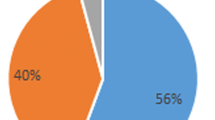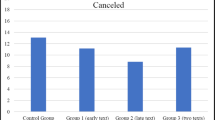Abstract
Research Question
Will sending defendants text messages reminding them that they are due at court, the day before, cause more defendants to attend the first scheduled Magistrate’s Court hearing?
Data
The study universe included all 946 defendants in Hampshire and the Isle of Wight sent a postal requisition requiring them to attend court, who also had a mobile phone number, between January and June 2017. Two outcomes were then tracked: court attendance and fail-to-appear warrants.
Method
The experiment randomly assigned defendants at the point of postal requisition creation into the control group (n = 472), which received the standard postal approach, or the experimental treatment group (n = 474), which was sent a prescribed text message on the day before the court appearance. An intention to treat methodology was adopted, with a treatment integrity rate of 97% achieved. Post-experimental phone calls tracked the accuracy of 300 of the text numbers used across both experimental and control groups.
Findings
No statistically significant effect of text messages was found on either attendance at court (OR 1.06, p = 0.661) or fail-to-appear warrants issued (OR 1.106, p = 0.512). Sub-group moderator analyses were conducted by age, distance from home to court, prior history of failure to appear, and investigator contact with defendants. No sub-group showed statistically significant differences in either outcome. The post-experimental survey of phone number quality in a random sample of 300 numbers from both groups found 62% were either invalid (uncontactable) or confirmed as not being valid for the defendant. Reanalysis limited to the sub-sample of the 112 accurate numbers found that text messages had produced a promising but non-significant boost in court attendance rates.
Conclusions
“Nudge Texts” may be able to boost court attendance, but only if the accuracy of phone numbers used is assured in advance of sending the text messages.







Similar content being viewed by others
References
Cadena, X. & Schoar, A., (2011). Remembering to pay? Reminders vs financial incentives for loan repayments, Cambridge MA: National Bureau of Economic Research Working Paper No. 17020.
Castleman, B. L., & Page, L. C. (2015). Summer nudging: can personalized text messages and peer mentor outreach increase college going among low-income high school graduates? Journal of Economic Behavior and Organization, 115, 144–160.
Chivers, B. (in review). Nudging up defendant court appearances with text message reminders: A randomised controlled trial, (Unpublished MSt thesis, University of Cambridge).
Cohen, J. (1992). A power primer. Psychology Bulletin, 112(1), 155–159.
Dijkstra, A. (2005). Working mechanisms of computer-tailored health education: evidence from smoke cessation. Health Education Research, 20, 527–539.
Evans, D. (2017). Posta requisitions. -: [email].
Hagan, F. E. (2006). Research methods in criminal justice and criminology (Seventh ed.). Boston: Allyn and Bacon.
Halpern, D. (2016). Inside the nudge unit (2nd ed.). London: WH Allen.
Haynes, L. C., et al. (2013). Collection of delinquent fines: an adaptive randomized trial to assess the effectiveness of alternative text messages. Journal of Policy Analysis and Management, 32(4), 718–730.
Home Office (2015). News Story - Home Secretary announces time limits for police bail. [Online] Available at: https://www.gov.uk/government/news/home-secretary-announces-time-limits-for-police-bail. Accessed 26 April 2017.
Karlan, D., McConnell, M., Mullainathan, S., & Zinman, J. (2016). Getting to the top of mind: how reminders increase saving. Management Science, 62(12), 3393–3411.
Klein, G. (2004). The power of intuition: how to use your gut feelings to make better decisions at work. S.L.:Crown Business.
Kosters, M., & Van der Heijden, J. (2015). From mechanism to virtue: evaluating nudge theory. Evaluation, 21(3), 276–291.
National Audit Office (2016). Efficiency in the criminal justice system. Cmnd:: HC 852.
Ofcom (2016). The Communications Market Report. [Online] Available at: https://www.ofcom.org.uk/research-and-data/multi-sector-research/cmr/cmr16/the-communications-market-report-uk. Accessed 21 July 2017.
Posner, P. L. (2009). The Pracademic: an agenda for re-engaging practitioners and academics. Public Budgeting & Finance, 29(1), 12–26.
Robotham, D., et al. (2016). Using digital notifications to improve attendance in clinic: systematic review and meta-analysis. BMJ Open, 6, 1–15.
Sherman, L. W. (2013). The rise of evidence-based policing: targeting, testing and tracking. Crime and Justice, 42, 377–451.
Society of Evidence Based Policing (2016). Society of Evidence Based Policing - Resources. [Online] Available at: https://www.sebp.police.uk/resources. Accessed 16 October 2017.
Stigler, S. M. (2005). Correlation and causation: a comment. Perspectives in Biology and Medicine, 48(1), 88–94.
Taylor, N. F., Bottrell, J., Lawler, K. & Benjamin , D. (2012). Mobile telephone short message service reminders can reduce nonattendance in physical therapy outpatien.T clinics: a randomized controlled trial. Archives of Physical Medicine and Rehabilitation, 93(1), pp. 21–26.
Thaler, R. H., & Sunstein, C. R. (2009). Nudge (improving decisions about health, wealth and happiness) (1st ed.). London: Penguin Books Ltd..
Youssef, A., et al. (2014). Effectiveness of text message reminders on nonattendance of outpatient clinic appointments in three different specioalties: a randomized controlled trial in a Saudi Hospital. Journal of Taibah University Medical Sciences, 9(1), 23–29.
Acknowledgements
The first author wishes to thank Hampshire Constabulary and the College of Policing’s Police Knowledge Fund for its financial support of his course of study for the University of Cambridge M.St. degree in Applied Criminology and Police Management, for which this study was done as the thesis requirement. He also thanks the criminal justice team of Hampshire Constabulary for their many contributions to conducting the experiment, with consistent effort and accuracy over a long period of time, as well as the Constabulary leadership of Chief Constable Olivia Pinkney and Deputy Chief Constable Sara Glen. He also thanks Fitzwilliam College, Cambridge, and the staff of the Cambridge Police Executive Programme.
Author information
Authors and Affiliations
Corresponding author
Appendices
Appendix 1 Text Message Sample

Appendix 2 Crim-port










Rights and permissions
About this article
Cite this article
Chivers, B., Barnes, G. Sorry, Wrong Number: Tracking Court Attendance Targeting Through Testing a “Nudge” Text. Camb J Evid Based Polic 2, 4–34 (2018). https://doi.org/10.1007/s41887-018-0023-5
Published:
Issue Date:
DOI: https://doi.org/10.1007/s41887-018-0023-5




